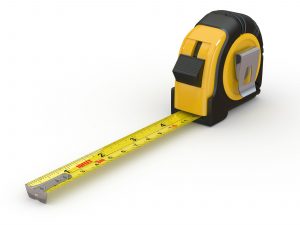NEWMARKET (Rowley) Racecourse Template (Saturday 4 May 2024)
May 3rd, 2024
NATIONAL AVERAGES EXPLAINED by The Racing Horse
Posted by in Blog
Tagged Betting advice, National Average, Pacafi, Racecourse Template, The Racing Horse
Leave a comment
|

.
The Racing Horse will attempt to answer those two questions. In a general sense we use the strike rate recorded by the trainer over the last five years as a standard, this number is deemed to be an honest indicator against which current form can be measured - this is called the NATIONAL AVERAGE. This figure is factual and helps remove random, bias and opinion from the wagering thought process.
This MATHEMATICAL BASE FIGURE is TOTALLY IGNORED by PUNDRITY despite its CORE VALUE! |
Secondly, the national average is always relevant, contextual and pertinent because of the cold mathematics contained within them. As a general rule, trainers with bigger numbers must be considered more proficient than those with smaller numbers. In part-clarification we look at the national averages of 20 trainers currently competing in the UK and ask the reader to absorb then consider their relevance and fitness (updated 05/11/2022):
We are not suggesting the figures should always be taken literally.
Proven mathematical laws are the governing force of horse racing betting, with this in mind, it must be reasonable to accept or at least acknowledge current trainer statistics and the mathematics that accompany them.
Good recent trainer form is an indicative test and in a general sense suggests/confirms/proves the well-being of the stable’s horses, delivering a litmus test on readiness to run positively. Marrying up GOOD RECENT FORM with a NATIONAL AVERAGE must represent a logical first step when analysing a horse race!Conversely, and assuming one does not have specific inside information (which may contain an edge), backing horses of trainers on the cold list must be considered unwise. |
There are any number of random factors that can affect a result and it takes small margins to win most races. These issues are more likely to be compounded if the horse is not ready or prepared for the particular task! Furthermore, if one accepts that handicap racing forms more than half of all races on the cards of UK race meetings, a few pounds of improvement or decay can mean the difference between winning and finishing down the field. These margins are contained and embedded within the national averages.
Each horse has a potential ability level, whether they achieve that is another matter. The better the horse is trained and looked after the more it is likely to achieve. Finding the bandwidth to which each horse can aspire needs the trainer to be totally in tune with his charge and, whilst some achieve, most fail in this regard. Based on this incongruity we only trust recent form and trainers of some quality or regard. Once again, these levels are contained within the national averages.
In conclusion, we believe the national averages are a form of seeds or rankings and definitely matter when processing/filtering a race. Once we have identified a race of interest we seek to confirm the form of the trainer. We do this by simply measuring his current or course form against the national average. Remember, this is not a fixed position, the term national average is always used in context.
For example, Roger Varian has a national average of 20% and Richard Hannon has one of 11%. Had Varian shown a current strike rate of 11% over the last month or so, that would be a cause for concern, if Hannon had shown the same strike rate there would be no cause for concern, because he is replicating/matching his natural average.
We know there are many professional bettors who do not consider trainer form as the cornerstone of betting as we do, we accept the fact. The Racing Horse knows of a number of accomplished bettors who enjoy betting in both high and low grade handicaps, where literal trainer form does not have the same supremacy. These are areas where argument weighting and prices are more important, but our betting and emotional need is one based on higher winning strike rates and smaller losing runs.
***
Our information and betting advice is for educational purposes only. Please exercise caution when acting upon our advice and remember that gambling carries risk. No liability is taken by the site or product owner following any of the information given or sold to you. Betting always involves a level of risk, and you should never bet more than you can afford to lose. |
|
Proven mathematical laws are the governing force of horse racing betting. Consequently every bet we place is conceived then predicated from statistical analysis protected by a math-based edge with perceived value attached. Our formula is simple because we are yet to be convinced that a complication of a system is proportional to profit. So what do we mean by a math-based edge? It means finding something with a solid mathematical core, something historically profitable and something that is unlikely to change or suffer fatigue going forward. Then, if we can filter negative influences from the original proposal and provide a sound rationale for doing so, we can claim that betting edge. |